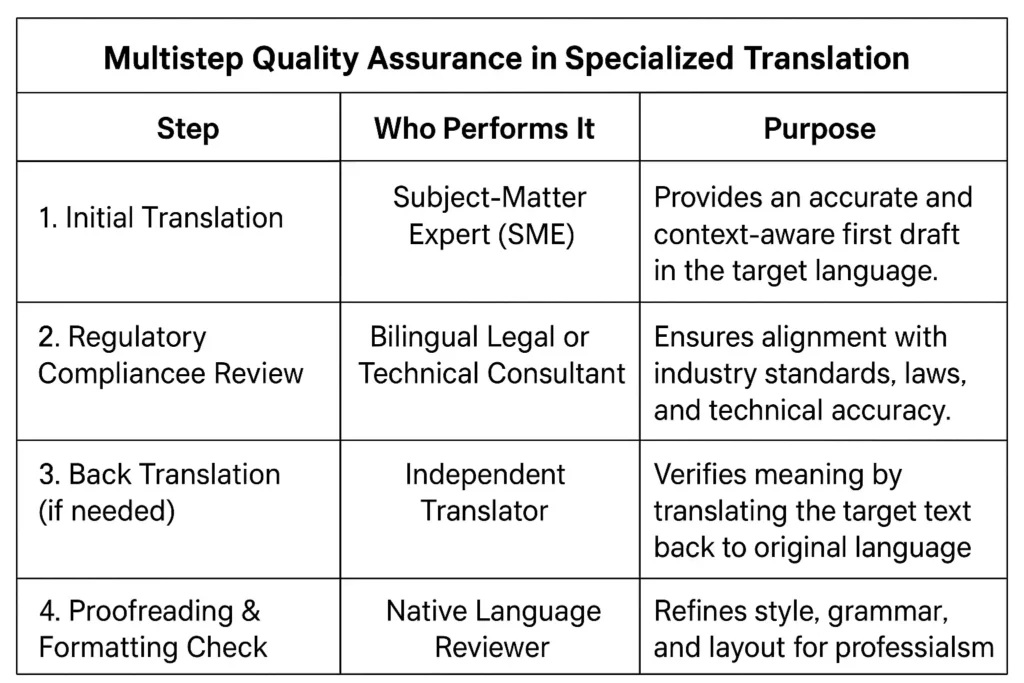When translating documents for China, it’s not just about language accuracy—regulatory compliance is paramount. Mistakes can delay approvals or result in legal consequences. Here’s how to get it right from the start.
Ensure compliance by using certified translators familiar with Chinese laws, regulatory terminology, and industry-specific language. Always verify formatting and approval procedures.
Want to avoid costly mistakes in your China expansion? Here’s 7 things to keep in mind.
1. Work with Translators Experienced in Chinese Regulatory Frameworks
China’s regulatory system is both complex and dynamic. Translation agencies or individuals unfamiliar with current local laws may inadvertently submit documents that are inaccurate, outdated, or non-compliant. According to the China Law Translate platform, recent changes in regulatory policies, especially in healthcare, education, and finance, have introduced new terminology and structural expectations in documentation.
Industry-Specific Expertise is Non-Negotiable For example, a pharmaceutical dossier translated for China’s National Medical Products Administration (NMPA) must follow the Common Technical Document (CTD) format in Chinese. Errors in section titles, units of measurement, or drug classification terms can lead to immediate rejection. Similarly, legal contracts translated for State Administration for Market Regulation (SAMR) review must reflect the structure and terminology accepted by Chinese courts.
2. What Certifications or Approvals Are Required?
Translations submitted to Chinese regulatory bodies often require certification by a sworn translator or approval from a translation agency officially registered in China. Our company is officially registered in China and can provide certified translations that meet these regulatory requirements.
When Are Certified Translations Needed?

Immigration or Visa Applications: Must be notarized and often legalized.
Business Registration: Requires official stamps and translations approved by local bureaus.
Patent Submissions: Must be filed with certified terminology accuracy by the China National Intellectual Property Administration (CNIPA).
👉Document Authentication For certain international documents, the full authentication chain may be needed: Translation → Notarization → Legalization by Chinese embassy or consulate.
3. How Can Formatting Affect Compliance?
Chinese authorities pay close attention to the format and layout of translated documents. Even small inconsistencies may raise red flags.
Standard Layouts and Style Guidelines
- Follow document templates published by Chinese authorities.
- Use Simplified Chinese characters only.
- Be consistent with punctuation, headers, and numbering systems.
📍Where to Find These Templates
Local Government Websites (e.g., 市政府、区政府官网)
行政服务中心 / 政务服务平台 (Government Service Platforms)
National Public Platforms:
- 中国政府网(www.gov.cn)
- 国家政务服务平台(www.gjzwfw.gov.cn)
Specific Ministries:
State Administration for Market Regulation (市场监管总局)
Ministry of Commerce (商务部)
Ministry of Education (教育部)
Ministry of Justice (司法部)
Tools to Assist Professional translation software such as SDL Trados and memoQ support Chinese-specific formatting. Localization engineers may also assist with layout adjustments for tables, flowcharts, and appendices.
4. Are There Sector-Specific Requirements?
Absolutely. Each sector in China has its own terminology, required document types, and review authorities.
Examples:
- Medical Devices: Must comply with NMPA standards and include IFUs (Instructions for Use) and clinical evaluations in Chinese.
- Education: Transcripts and diplomas must follow Ministry of Education formats.
- E-commerce: Product descriptions and legal disclaimers must be in line with SAMR advertising regulations.
5. How to Verify Translation Accuracy and Compliance?
Implement a Multi-Step Review Process

Technology-Assisted QA Use QA tools to identify term inconsistencies, number mismatches, and formatting errors. Cross-reference industry glossaries, such as CNIPA’s terminology database.
👉Document every stage for audit purposes. Chinese regulators may ask for evidence that the translation process followed compliance standards.
6. How to Keep Up with Changing Regulations?
China’s regulatory environment evolves rapidly. What was compliant last year might no longer pass.
Subscribe to Official Sources
- Monitor the websites of NMPA, SAMR, CNIPA, and the Ministry of Justice.
- Join translation or legal forums such as China Law Translate and local chambers of commerce.
Work with Partners Who Stay Updated Choose agencies that provide regular training for their linguists and have compliance teams dedicated to tracking legal and regulatory changes.
Attend Industry Events Conferences and workshops hosted by regulatory bodies or local governments often share valuable updates and guidelines.
7. What Risks Do Companies Face If Documents Are Non-Compliant?
Failure to comply with Chinese regulatory translation standards can have serious consequences:
- Delays in Market Entry: Time-sensitive approvals may be rejected or held for revision.
- Financial Penalties: Fines or rejection of permits can lead to high costs.
- Legal Exposure: Mistranslations in contracts can result in lawsuits or unenforceable terms.
- Reputational Damage: Non-compliance may tarnish your brand in a competitive market.
In conclusion, ensuring your translated documents meet China’s regulatory requirements is a multilayered task. It demands linguistic accuracy, legal precision, and cultural sensitivity. By partnering with qualified experts, respecting sector-specific protocols, and adhering to document formatting and authentication standards, you can prevent costly delays and ensure smooth regulatory approval.
Staying updated and thoroughly reviewing every detail in the translation workflow isn’t optional—it’s essential. Whether you’re a startup entering China or a multinational navigating compliance, precision and process are your best allies.
READ MORE:4 Useful Tips When Translating Legal Documents from English to Chinese
